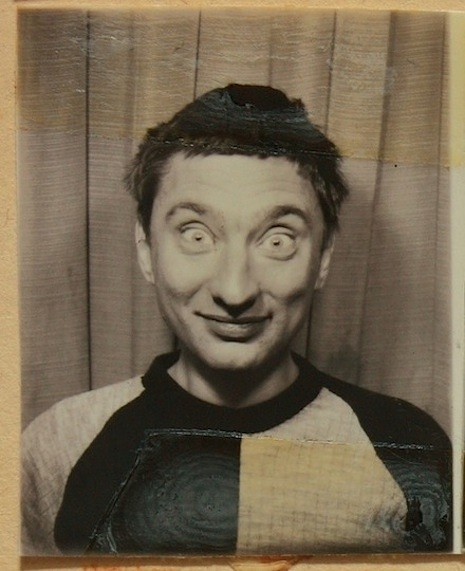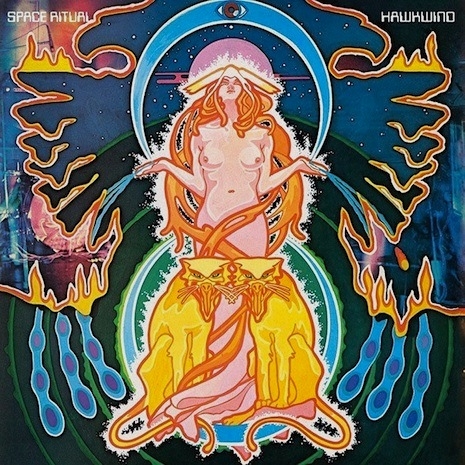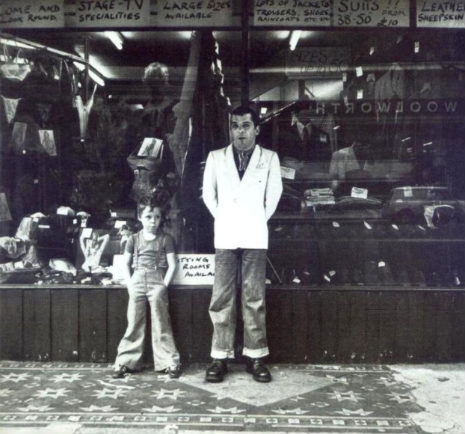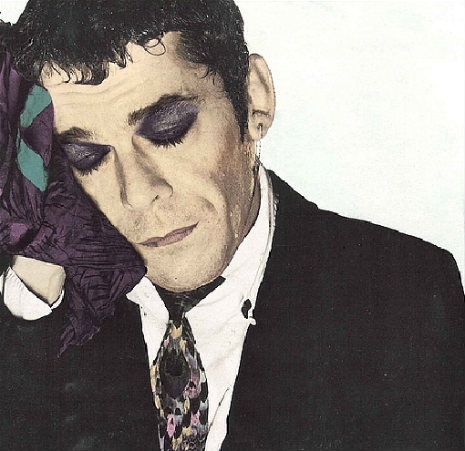
Barney Bubbles—photo-booth portrait.
Downloads don’t make it, nor do CDs—yon footery wee things that look more like drinks coasters or beer mats than containers for works of great music. CDs are too brittle—they easily crack—and can often be hell when trying to remove the inner notes without crease or tear. Only vinyl counts. Only vinyl gives the user the double pleasure of quality sound and quality design work to peruse.
When The Beatles started putting thought into the packaging of their albums—hiring artists like Klaus Voorman (Revolver), Peter Blake (Sgt. Pepper’s…) and Richard Hamilton (White Album)—the record sleeve became more than just a contents label. It allowed artists and designers to produce covers that would not only sell the music but become their own artwork. Among the designers who made a career out of record design, my own favorite (and arguably the greatest) was Barney Bubbles.
Born Colin Fulcher in 1942, Bubbles graduated from the Twickenham College of Technology, in London, before learning his craft as a graphic designer working with the likes of Michael Tucker + Associates and the Conran Group, before setting up the art group A1 Good Guyz with like-minded friends David Wills and Roy Burge in 1965. The trio organized various happenings and light shows across London before Bubbles started producing design work for Oz magazine in 1968.
By 1969, Bubbles had set up his own graphic studio Teenburger Designs on Portobello Road, where he began his highly successful design career. Over the next fourteen years, Bubbles produced memorable, eye-catching and popular record designs for Hawkwind, Elvis Costello, Ian Dury, The Damned, Lene Lovich and The Soft Toys. He was so talented and prolific he produced work under various different aliases—from Colin Fulcher to Big Jobs Ltd. But this was to do with modesty about his work rather than any fear over devaluing his brand name, as he explained to The Face magazine in 1981:
“...I don’t really like crediting myself on people’s albums—like you’ve got a Nick Lowe album, it’s NICK LOWE’S album not a Barney Bubbles’ album.”
After a year-long trip to Ireland—(“to recover from the end of a long term personal relationship”), Bubbles was appointed Art Director at Stiff Records by Jake Riviera (aka Andrew Jakeman) in 1977, where he supplied album, single and promotional designs for the label’s roster of artists—this was where he produced the incredible and stunning foldout sleeve for Elvis Costello’s Armed Forces LP—a work that became (quite literally) a text book for succeeding graphic designers to steal from. Working Stiff Records was liberating for Bubbles as he later said in an interview:
“It’s fun working with Jake, we’d just walk around the block—‘cause he was so busy—it would all be done in five minutes. I could actually do what I wanted to do without being told off by record companies that say ‘Fantastic but don’t you think…?’ and then they fuck it up!”
Bubbles said his approach to record design was “to wait, hear the music and meet the guys, and they tell you what they want and its up to you to deliver it.” During this time he also redesigned the N.M.E. logo and eventually branched out into a career as highly successful promo director making videos for The Specials (“Ghost Town,” “The Boiler”), Squeeze (“Is The Love?”), Elvis Costello (“Clubland”) and the Fun Boy Three (“The Lunatics (Have Taken Over the Asylum)”). He also started painting pictures an designing furniture. Just when Bubbles should have been getting the praise, recognition and superstardom his genius as a designer deserved, his career faltered and his designs started being rejected by his once loyal record labels and artists. Bubbles suffered from bi-polar disorder and the rejection devastated him, which led to his tragic suicide in November 1983.
Barney Bubbles was one of those rare artists and graphic designers whose work could make you go out and buy an album or a single—by an act you had never heard of before—just by the quality of his sleeve design. Thankfully, unlike book design, you can judge a record by a Barney Bubbles’ cover.

Hawkwind ‘Search for Space’ (1971).

Hawkwind ‘Doremi Fasol Latido’ (1972).

Hawkwind ‘Space Ritual’ (1973).
More of Barney Bubbles’ work, after the jump…








